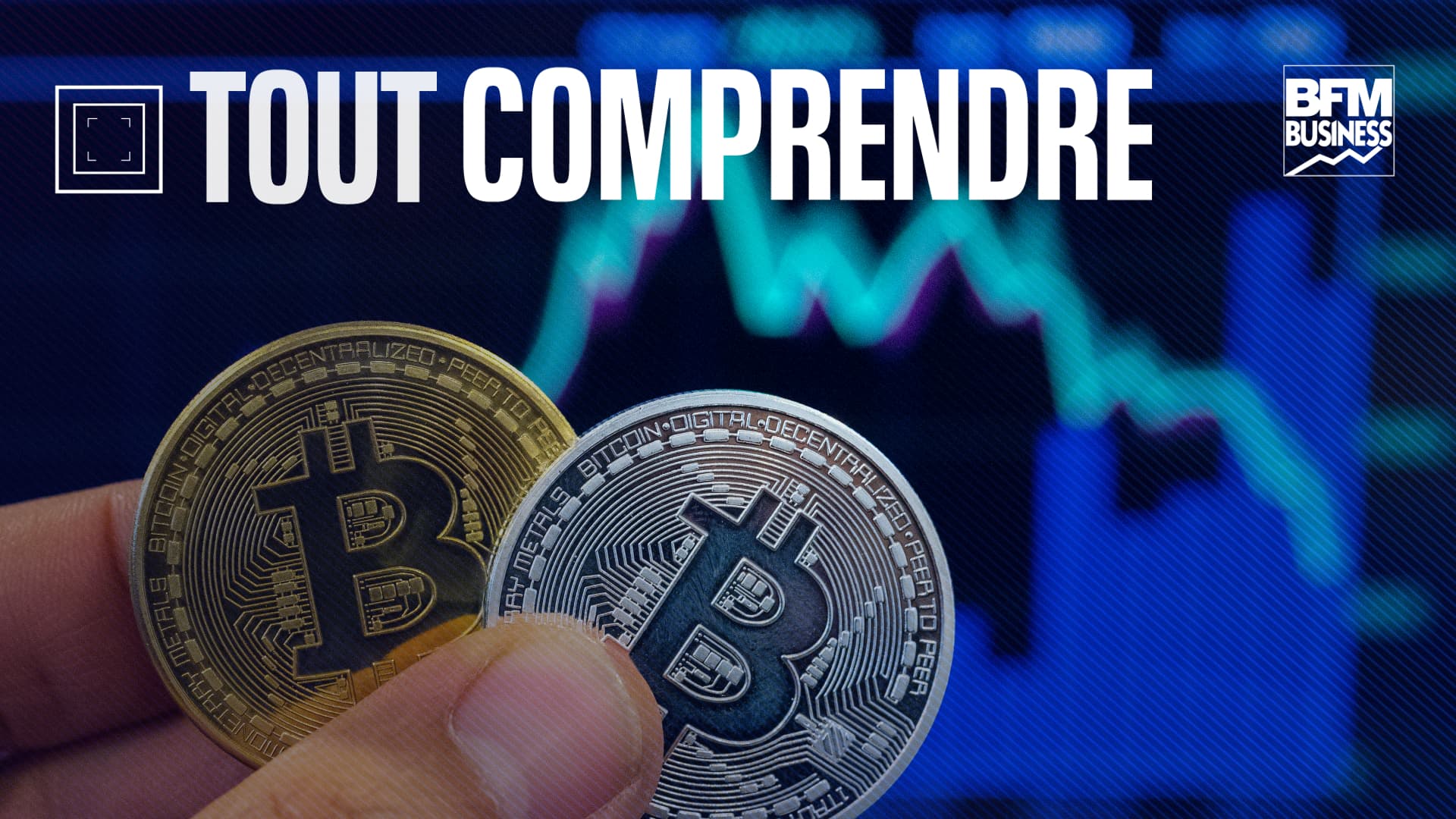
The next bitcoin halving will take place around April 19, 2024. This event explains, in part, the current surge in the price of the cryptocurrency.
Monday March 11, bitcoin crossed a new historic threshold above $72,000. If the arrival of spot bitcoin ETFs contributed to the rise of the queen of cryptocurrencies, another event can explain its rise. The bitcoin halving planned for around April 19, 2024.
• What is bitcoin halving?
This event takes place approximately every four years and more precisely every 210,000 blocks validated on the Bitcoin blockchain. This is a halving of the number of bitcoins issued to the market as rewards for miners (who validate transactions on the blockchain). From an economic point of view, this consists of a halving of the issuance of new bitcoins.
In his white paper (white paper), Satoshi Nakamoto set a limited number of bitcoins in circulation in the market of 21 million, in order to make bitcoin rare. Since the creation of bitcoin in 2009, 3 halvings have already taken place: in 2012, in 2016 and in 2020. As of March 12, 2023, and after 3 different halvings, 19.65 million bitcoins have already been put into circulation. It is estimated that 21 million bitcoins will have been mined around 2140.
• How are bitcoins put into circulation on the market?
The monetary creation of bitcoin is done by tens of thousands of computers, also called “miners”. The Bitcoin blockchain operates on a so-called “proof of work” system where miners run their computers to solve a mathematical problem which allows a new block (which brings together a certain number of transactions) to be added to the blockchain.
By adding a new block to the network, which helps secure the Bitcoin network, each miner receives a certain number of bitcoins from the network as a reward. This reward is halved with each halving.
“The Bitcoin network algorithm will credit the balance of a miner’s account, in the form of a monetary creation of bitcoins. This comes from a monetary creation,” explains Renaud Lifchitz, scientific director of Holiseum.
• How many bitcoins are created per day?
Upon validation of a block which takes place approximately every 10 minutes, new bitcoins are given as a reward to miners. Over the last 3 halvings, the number of bitcoins distributed to each miner has been halved, from 50 to 25 bitcoins in 2012, then from 25 to 12.5 bitcoins in 2016 and finally from 12.5 to 6.25 bitcoins in 2020.
In April 2024, the number of bitcoins distributed to each miner will increase from 6.25 to 3.125 bitcoins. In total, the number of bitcoins issued will increase from 900 bitcoins to 450 bitcoins each day after the 2024 halving.
However, these 450 bitcoins will not all be put into circulation on the market from April 2024. To finance their activity (in particular the cost of electricity, mining machines, etc.), miners must certainly sell certain acquired bitcoins but not necessarily right away. The calculation of their profitability depends on different factors: cost of energy or price of bitcoin. For example, if the price of bitcoin is too low, the miner will have an interest in keeping it to resell it later if its price increases.
• What will be the impact on the price of bitcoin after the 2024 halving?
Over the last three halvings, it has been observed that as the supply of new bitcoins available decreased, its price ended up increasing.
“Rewards issued to miners per block will be reduced from 6.25 bitcoins to 3.125 bitcoins. This reduces the inflation rate of Bitcoin from 1.7% to just 0.85% per year” (if we report the creation of new bitcoins to the total number of bitcoins issued since the beginning), underlines the company IntoTheBlock.
The company 10X Research notably calculated that 60 days before the three previous halvings, and due to the halving of new bitcoins issued on the market, bitcoin increased by approximately 32%, then by 30% eight weeks after this event.
But while the price of bitcoin has already established an all-time high, what can we expect for the halving next April? This cycle “is different because we are witnessing an institutionalization of bitcoin since the arrival of spot bitcoin ETFs. There is a shift in seasons which are advanced compared to what we are used to knowing”, slips a former bitcoin miner.
“This is why we are experiencing a high in bitcoin before the halving, while this phenomenon was observed after the 3 previous halvings. This does not exclude the possibility that we are experiencing a new high in bitcoin after the halving of April 2024. Generally speaking, bitcoin being a rare resource, it remains a reserve value and therefore is oriented upwards in the long term,” he believes.
Despite these optimistic projections, the cryptocurrency market remains volatile. The price of bitcoin was particularly weakened in 2022 and 2023, with a low observed in November 2023 below $16,000 following the fall of the crypto exchange FTX.
Source: https://www.bfmtv.com/crypto/bitcoin/tout-comprendre-qu-est-ce-que-le-halving-du-bitcoin_AV-202403120476.html


